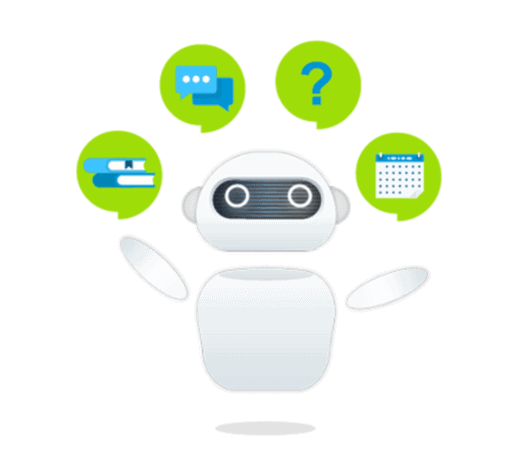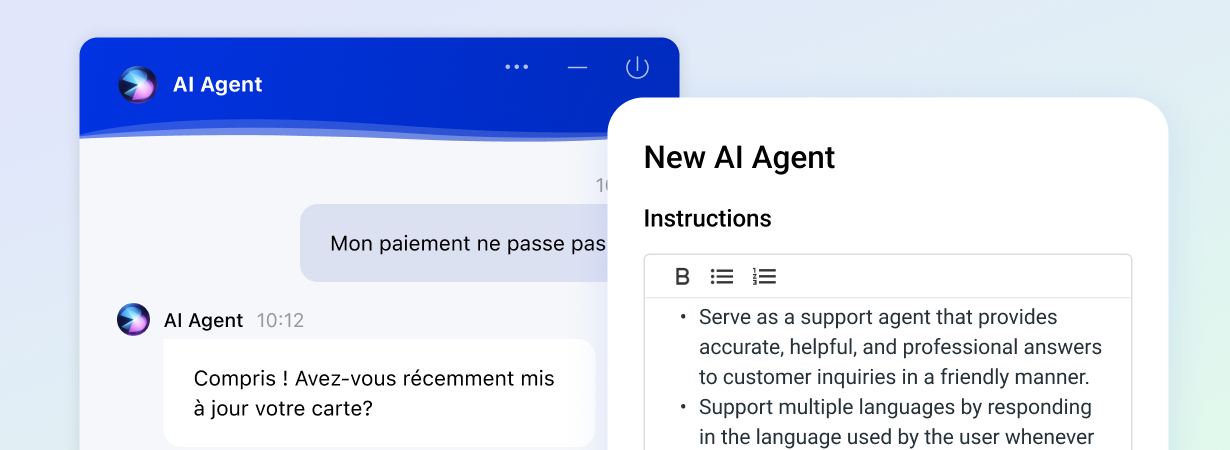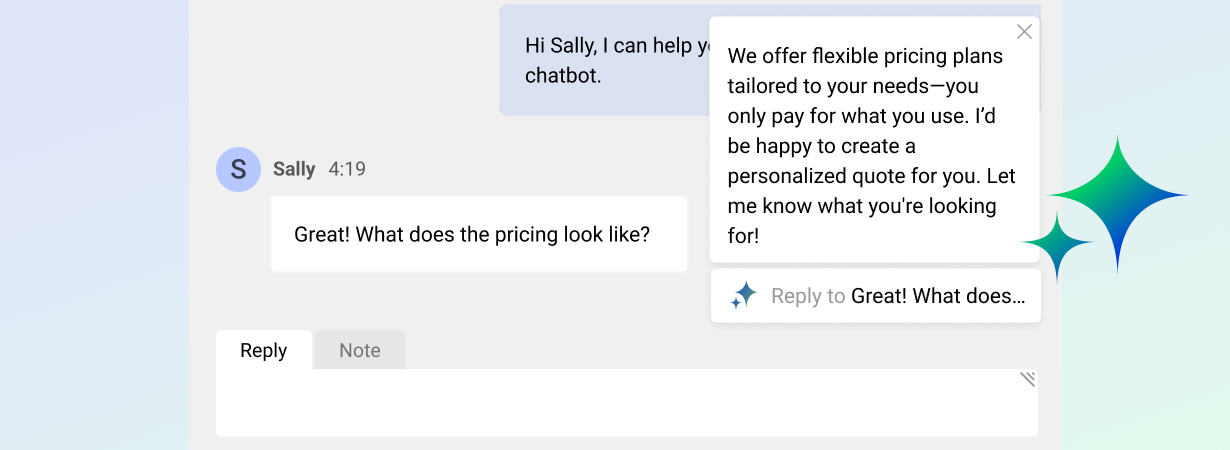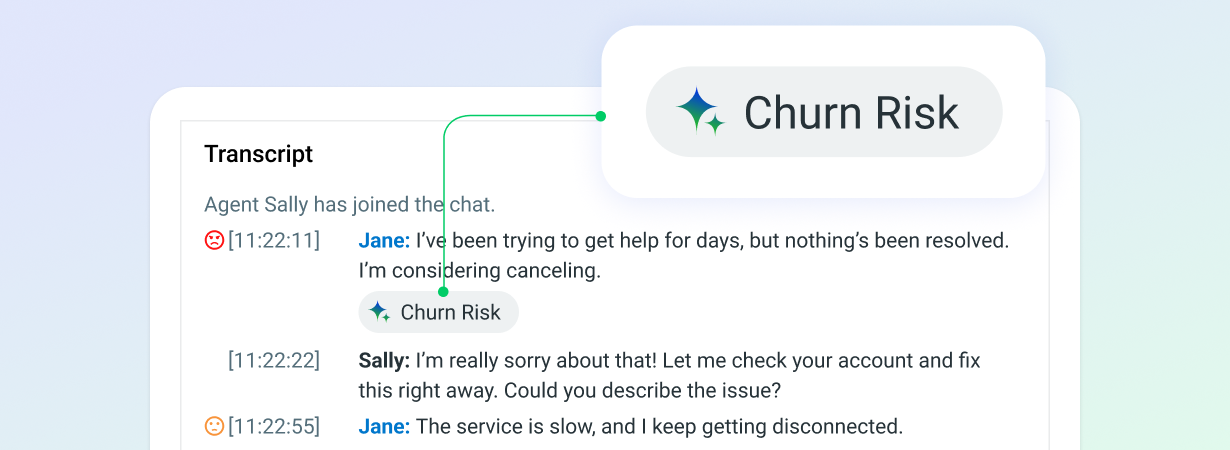Customer service isn’t easy, but new technologies are making it easier. With artificial intelligence like chatbots, brands can serve more customers faster than ever before – all the while keeping a high level of service quality. Not only are chatbots convenient, but they’re also quickly becoming necessary thanks to their ability to provide customers with 24/7 service.
Despite what many people assume, customer service agents aren’t being left behind in the move toward automation. When deployed well, chatbots should work alongside agents to deliver better customer experience (CX) while improving agent productivity and efficiency.
If you’ve thought about integrating chatbots but are not sure where to start, read on. In this blog we’ll walk you through the four key steps you need to consider for a highly effective customer service chatbot.
Step 1 – What are your goals?
Successfully introducing chatbots in customer service begins by asking yourself “what business outcomes am I hoping to achieve?”. This will help to guide your expectations and set targets throughout chatbot deployment. Examples of goals for chatbots include:
- Providing 24/7 support
- Driving revenue by proactively alerting customers to sales and discounts, qualifying customers, and booking demos.
- Increasing customer satisfaction by lowering wait times and providing faster answers.
It’s also possible for chatbots to achieve more than one goal at a time. The most common use for chatbots is to answer repetitive, common questions so your agents can focus on the more important, high-value queries. However, a sophisticated chatbot can do so much more than just deliver answers; it can take action too.
Comm100 AI Chatbot can help customers to book meetings and make payments through connections to other business systems. Conditional Logic can even empower your bot to personalize customer interactions based on a customer’s profile and relationship with your business so your support is always personalized and relevant. All of this adds up to an AI customer service support that does so much more than answer basic questions – it gets stuff done!
Deciding what you want a chatbot to achieve also means being realistic about the scope of your chatbot. AI bots can accomplish a lot of tasks and handle a lot of inquiries, but you shouldn’t expect bots to handle everything – all customer service teams will face questions that need the “human touch”. This should be discussed with your agents as well, to help them understand that they’re not being replaced.
Recommended reading: Why Agents Need Chatbots – and Chatbots Need Agents
Step 2 – What channels do you need support on?
Once you’ve decided what you want your chatbot to achieve, you need to decide what channels it will be most effective on. Depending on the types of customers you want to reach, or the type of service that you want your chatbot to provide, you’ll have several options to choose from. Live chat on your site is the most common channel to implement a chatbot, and done well can be extremely effective. Other channels that you should consider are:
- Mobile app support
- Social media platforms
- SMS
Comm100 Chatbot can operate across all these channels. This allows you to gain the benefits of each platform while also simplifying the chatbot deployment process.
The support that you provide customers also speaks to the kind of experiences that you offer and can help to develop your company’s brand. On one hand, introducing live chat to your website supported by a chatbot allows you to offer customers a more personalized experience. On the other hand, chatbot integration with social media platforms like Facebook and Twitter shows customers that you’re willing to meet them on their terms in the places they frequently visit.
Read More – Canadian Blood Services Improves Customer & Agent Experience with Comm100 AI Chatbot – https://www.comm100.com/customers/canadian-blood-services-part-2/
Step 3 – What integrations are important to your operations?
While a chatbot on its own is a powerful customer service tool, using chatbots to their fullest potential means integrating them with your existing services and systems. The benefits of this are many, depending on the integration.
Whether your bot support sales, support, or both, you can integrate a chatbot with your CRM system to ensure data is shared across the platforms to achieve data clarity, consistency, and transparency across teams and throughout the customer lifecycle. It also eliminates the need to manually log interactions and update data. Comm100’s integration with Salesforce CRM and Dynamics 365 CRM streamlines lead management when chatting with new customers and gives your agents more context when chatting with existing ones.
Leveraging existing systems allows for your chatbot to provide more personalized and useful responses to customers. Integrations should empower your bot to handle customer services rather than simply sending them elsewhere through redirects. An example of a poor integration would be using web links to redirect customers to an order page. A proper integration would instead program an order form directly into the bot to provide a seamless user experience.
Chatbots that neglect integration and redirect customers elsewhere become a navigation tool rather than meeting their full potential as a personalized helper. If you depend on the kind of customer interactions that require order form integration, and your bot cannot be programmed to handle them, you may want to look for a different bot vendor offering that capability.
Step 4 – Do you have the resources to train your chatbot?
Just like training a new employee, a new chatbot should be introduced to your customers and your business gradually. If you’re adding a bot to live chat, this means introducing your chatbot first to some of your lower traffic pages and making adjustments as necessary before a full rollout.
To help manage expectations, it’s a good idea to let your customers know that your chatbot is a work in progress. This could mean including a message from your bot such as “I’m still learning, but I can help you with X, Y, and Z.” Preparing your customers for limited initial functionality can help to reduce frustrations.
You can expect that just like in any human in conversation, your chatbot will experience misunderstandings. Programming in error messages for these misunderstandings can help to get conversations with customers back on track. Giving customers a way to start over means that they won’t run into insurmountable roadblocks in interactions that ruin their experience. And most importantly, always give your customers the option to speak with an agent at all times.
Allowing your chatbot to clarify misunderstandings is another way to ensure that customers have a smooth overall experience even as a chatbot learns how to best meet their needs. This also means providing some flexibility in your chatbot programming to produce more natural feeling interactions.
To understand how your chatbot is performing and to measure the customer experience, you should give customers the option to rate the responses that your chatbot provides. Looking at the low-rated responses will help you to know where you should focus in future improvements. Just as any effective support agent builds a repertoire of successful responses over time, your chatbot will need time to understand your customers and the task at hand.
Comm100’s AI Chatbot learns from past interactions through customer feedback and conversations so it’s continually learning and improving. Understanding that trial and error are part of the process will help to set your own expectations for your chatbot’s deployment. Rome wasn’t built in a day, and neither is an effective chatbot.
Wrap Up
Today’s chatbots can offer customers a fantastic, around-the-clock support experience at a fraction of the price needed to provide 24/7 support using live agents. The benefits also extend to support agents with fast and accessible integration using your existing digital infrastructure.
Introducing a new chatbot doesn’t just happen overnight, and like any technology investment, building an effective chatbot takes time. With support resources in place, integration with your other services, and feedback gathered from interactions, a chatbot becomes an invaluable part of your customer service that only gets better over time.
If you’re interested in learning more about introducing a chatbot to your customer service, take a look at Comm100’s AI Chatbot in action. This 10-minute walkthrough session includes:
- The functions our chatbot can perform
- How our chatbot interacts with human agents
- How our chatbot is trained and maintained
See Comm100 AI Chatbot in action
Watch this 10-min video to discover what Comm100’s chatbot could do for you.
Watch now
Product Tour
Kate is the Content Marketing Manager at Comm100. She has extensive experience in content creation for technology companies across the world, including the UK, Australia and Canada. She specializes in B2B messaging, branding and soccer trivia.
Find this article helpful? Don’t forget to share.







